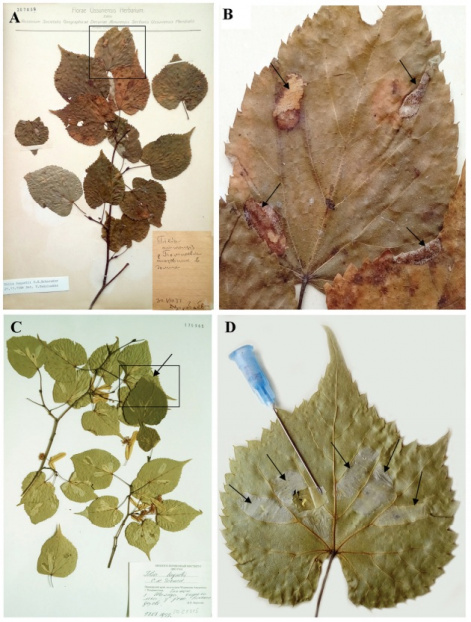Scientists are trying to figure out the "origin" of the linden-damaging leaf miners, studying centuries-old herbarium
18 October 2019 г.

Scientists dedicated their research to the linden leaf miner moth, which has widely spread throughout Eurasia, presumably, from East Asia. This moth is called “miner” because its larvae develop in "mines" - the cavities they gnaw inside a leaf. Over the past three decades, the insect has spread rapidly from east to west, causing damage to linden trees. The scientists studied two herbarium collections from Vladivostok, and having taken moth samples from mines on dried leaves, they are now trying to estimate the boundaries of the primary habitat of the insect.
“Using historical herbarium collections, we intend to find out the origin of the insect and which East Asian countries made the biggest contribution to the its spread to the west. Knowing the insect’s “homeland” and studying the factors inhibiting its development in its native environment, we will come closer to understanding how to best control pest populations in the regions of its spread,” explains a senior research associate at the V.N.Sukachev Institute of Forest KSC SB RAS and Institute of Ecology and Geography SibFU, Natalya Kirichenko.
The researchers found that this type of moth had initially been more widespread in the Far East than it is commonly believed: traces of linden leaf miners were found in the Amur Region, Jewish Autonomous District, Primorsk and Khabarovsk Regions.
"In the Far East, the insect traces had been found long before the species was described as new to science. The linden leaf miner was discovered and described in Japan in 1963. The earliest finding in the herbarium we examined dates back to 1936. We found both a mine and a moth larvae in it, " says Natalya Kirichenko.
The authors intend to perform a series of studies to better understand genetic characteristics which will allow one to determine the distribution paths of the linden leaf miners from east to west of the Eurasian continent. Among the main hypotheses, not only Japan and Korea, but also China are considered to be the initial habitat of the insect.
Source: TASS
Share:
